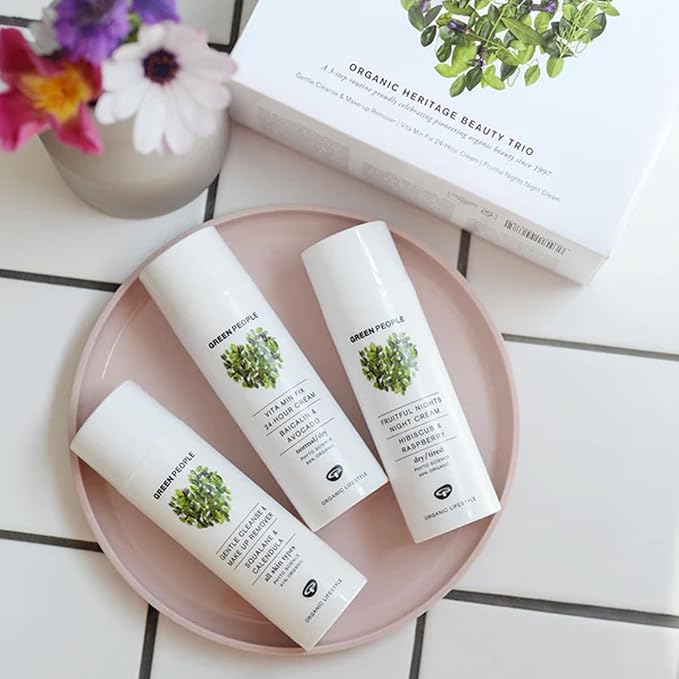A feature wall can instantly make a living room feel more intentional, adding depth and character without a full renovation. The key is choosing the right surface (often the wall behind the sofa, fireplace, or TV), then matching colour, texture, and lighting to the way you actually use the space. Deep blues, greens, and charcoals create a cosy, evening-friendly mood, while warmer terracottas and ochres bring energy for social rooms. If paint feels too simple, wallpaper, slatted panelling, or subtle texture can deliver impact without overwhelming the rest of your décor. Keep sight lines in mind, avoid walls broken up by doors and windows, and test samples across morning, afternoon, and lamp light before committing. At Friendly Turtle EcoBlog, we love home updates that look great and last: thoughtful choices, quality finishes, and flexible styling that won’t date after one season.
Share your articles with us and get published! Reach out at hello@friendlyturtle.com.
Sustainable Winter: 10 Eco-Friendly Tips to Heat Your Home This Year

Imagine a winter where you can enjoy the beauty of the season without having to worry about your carbon footprint. A winter where you can live sustainably and stylishly at the same time.
This winter is possible. If after googling the central heating or new boiler cost you're still up for more eco-friendly options, then read on.
In this article, we will share 10 eco-friendly tips for heating your home this winter. These tips are easy to implement and will help you to live a more sustainable lifestyle.
1.Insulate your home
Insulation is one of the most important things you can do to reduce your energy consumption and heating bills. Insulation helps to keep the heat in and the cold out, which can save you a significant amount of money on your energy bills.
There are many different ways to insulate your home. You can insulate your attic, walls, and floors. However, no matter how well-insulated your house is, it doesn't protect you from the cold which comes through the glass. That's why you should consider heat control window films.
Also, insulation can be made from sustainable materials such as recycled paper, cotton or sheep's wool. These materials are renewable and biodegradable and thus have a lower environmental impact than fibreglass, for example.
2.Use heat control window film
Window films are designed for heat control function by redirecting infrared radiation back into the interior space, thereby aiding in maintaining warmth within the home during the winter season.
These films consist of a slender layer composed of either metal or ceramic, applied to the window surface. This metal or ceramic layer effectively redirects the infrared radiation inward, contributing to the preservation of heat indoors.
Moreover, they are able to cool your home down in summer, so you won't need to use air conditioning that much. This way, you can apply heat control films once and enjoy the benefits all year round.
3.Install double or triple-glazed windows
Double and triple-glazed windows provide effective insulation for your home during the winter, effectively shielding it from the frosty outdoor temperatures. They achieve this by establishing a protective barrier between your interior and the external environment, preventing the loss of heat.
Double-glazed windows consist of two glass panes with an insulating layer of air or gas in between. Typically, argon gas is the preferred choice due to its low heat conductivity. Consequently, it serves to retain warmth within your home during winter and keeps hot air out during the summer months.
To add more, double or triple-glazed windows will hush all the outside noises, so you can enjoy a peaceful vibe at your home.
4.Seal air leaks
Air leaks around windows, doors, and other openings can let out a lot of heat. Seal these leaks with caulk or weather stripping to keep the heat in.
You can find air leaks by holding a candle up to windows, doors, and other openings. If the flame flickers, there is an air leak. Once you have identified the air leaks, you can seal them with caulk or weather stripping.
Caulk is a flexible material that can be used to seal small cracks and gaps. Weather stripping is a long, thin piece of material that can be used to seal around windows and doors. Prepare the surface and let the caulk dry completely before painting over it.
5.Dress warmly
One of the best ways to stay warm is to dress warmly. Wear layers of clothing or wear socks and blanket to keep your feet warm.
Loose-fitting clothing allows for better air circulation, which can help you to stay warm. Start with a base layer of long underwear or thermal clothing. Then, add a middle layer of a sweater or fleece jacket. Finally, add an outer layer of a coat or jacket.
To be as sustainable as possible while dressing up at home, find deals on second hand clothing, and you'll be helping to reduce the environmental impact of the fast fashion industry. Also, there are a number of brands that are committed to producing sustainable clothing. These brands use sustainable materials and ethical manufacturing practices.

Not exactly clothing, but you can place some rugs to keep your feet warm. It's worth mentioning that such an option can help you contribute to your sustainability as you can craft a rug yourself using your old T-shirts or second-hand clothes. Just make sure you choose sustainable materials like wool, cotton or hemp as they have a lower environmental impact than synthetic materials and can be recycled.
6.Switch to renewable energy
If possible, switch to a renewable energy source for your heating needs, such as solar or wind power. Renewable energy is clean and sustainable, and it can help to reduce your carbon footprint. You can install solar panels on your roof, or you can purchase renewable energy from your utility company.
7.Use space heaters
Surely, as much as most of us want to bring our energy consumption to zero, our homes weren't built entirely off-grid friendly. However, what you could do to reduce your heating bills is heat individual rooms without having instead of the entire house using space heaters. However, be sure to use them safely and turn them off when you leave the room.
Search for a space heater with a high Energy Star rating to ensure it uses less energy to operate. Set your thermostat to a lower temperature and use your space heater in the room you're in. If you unplug it after use and turn it on when you need it, you can save on your heating bills.
8.Use energy-efficient appliances
When it's time to replace your old appliances, choose energy-efficient models. These appliances will use less energy to operate, which can save you money on your energy bills. Avoid using your washing machine or dishwasher during peak hours, when electricity rates are higher and remember to unplug your appliances when you don't use them.
9.Prepare warm beverages and food

Drinking warm beverages and cooking warm meals can help you to stay warm. Try tea, coffee, hot chocolate or gluhwein to get all warm and toasty.
You can also add spices such as ginger or cinnamon to your warm beverages and food to boost your metabolism and help you feel warmer. Eating oatmeal, sweet potatoes and nuts can help digestion, and produce necessary vitamins and nutrients which will keep your body warm.
10.Use a humidifier
Humidifiers add moisture to the air, which can make your home feel warmer and more comfortable. Humidifiers can also help to prevent dry skin and chapped lips.
Dry air feels cooler than moist air, even when the temperature is the same. Using a humidifier can add moisture to the air, which can make your home feel warmer.
In addition to heating your home in an eco-friendly manner, you can also create a cosy atmosphere that will make you feel warm and comfortable.
Light some candles and add some cosy touches to your home decor to enjoy your warm, cosy and a sustainable winter.
0 comments
Let customers speak for us
Blog posts
Good oral health starts long before the first wobbly tooth. When children learn simple routines early, they’re far more likely to avoid cavities, gum irritation and the stress of emergency appointments later on. Begin with regular dental check-ups so small issues are spotted quickly and visits feel normal, not scary. At home, let your child choose a toothbrush they actually like, then guide them through gentle circular brushing for two minutes, twice a day. Add flossing as soon as teeth touch, and keep it upbeat with a short story or a timer song. For a more planet-friendly routine, pick durable brushes (or responsibly sourced bamboo), turn off the tap while brushing, and choose refillable or recyclable packaging where possible. Friendly Turtle EcoBlog shares practical, low-waste lifestyle ideas like these, helping families build habits that protect little smiles while treading lighter on the Earth.
Preventive care is one of the kindest, most sustainable choices you can make for your pet. Many health problems start quietly: a little plaque, a mild itch from parasites, a gradual dip in energy, or stiffness that only shows up after rest. Left alone, these “small” issues can build into painful dental disease, weight-related strain on joints, or conditions that affect the heart, lungs, liver, or kidneys. In this Friendly Turtle EcoBlog guide, we share practical habits that protect pets over time, from parasite control and lifestyle-led vaccinations to age-appropriate nutrition, daily movement, and simple grooming checks that spot changes early. Consistent routines also matter more than most owners realise, helping you notice subtle shifts before they become expensive emergencies. The goal is not perfection, but steady, evidence-led care that keeps your companion comfortable, active, and thriving for longer.



